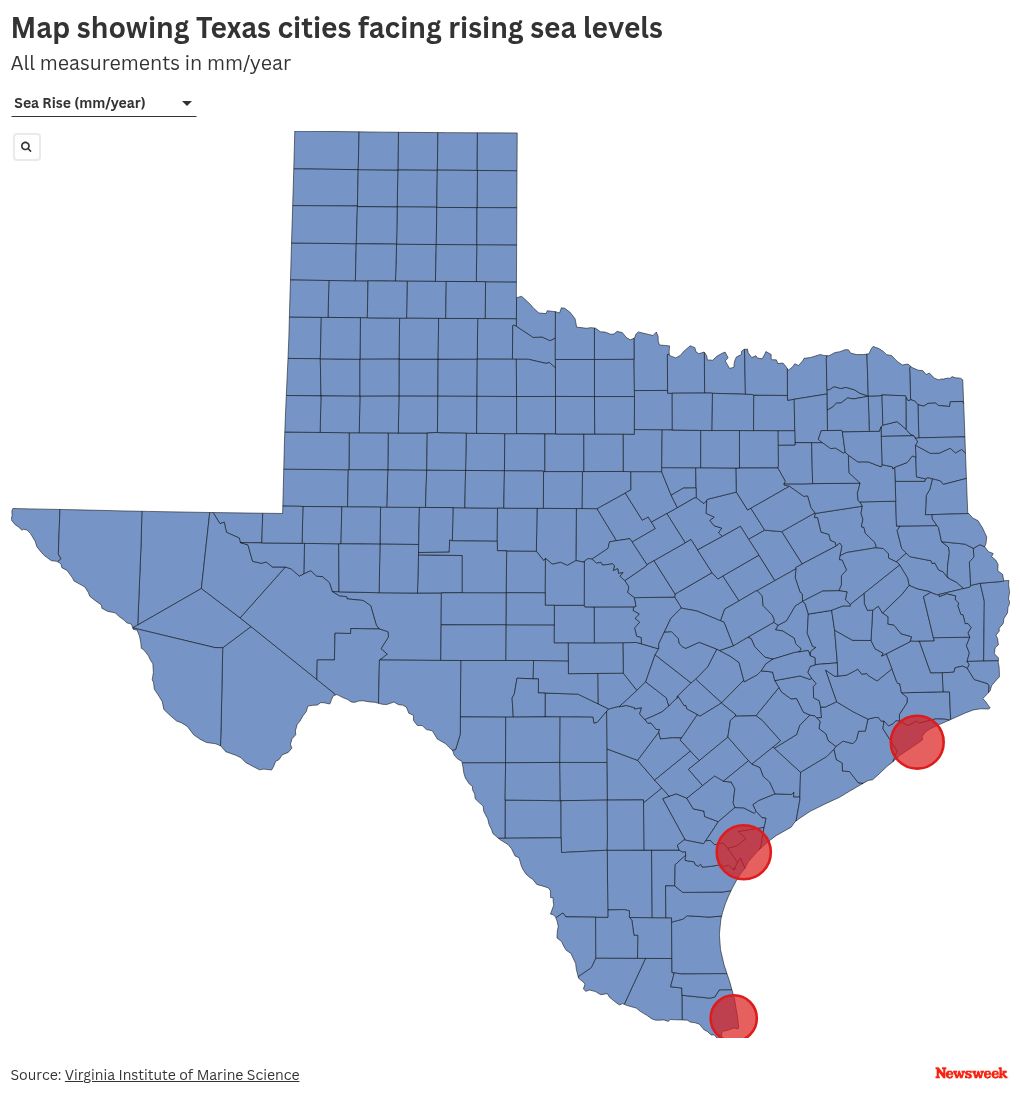Several coastal cities in Texas are facing rising sea levels that could impact infrastructure and homes, according to new data.
Research from the Virginia Institute of Marine Science has revealed that some of the highest sea level rises in the United States are along the coast of Texas in the Gulf of Mexico.
Why It Matters
The U.S.’s coastline is densely populated and will be vulnerable to more frequent and intense flooding, coastal erosion, and the loss of critical infrastructure as sea levels continue to rise. In particular, Texas has many cities and towns located along the Gulf Coast.
These sea level changes will profoundly impact life in some of the country’s largest cities and could even lead to the displacement of communities.
What To Know
The 2024 sea level analysis, based on 55 years of data from tide gauges across 36 U.S. coastal communities, uses historical measurements at specific locations, meaning each city has a specific sea level increase.
According to the data, mapped by Newsweek, three cities in Texas reported high sea level rises in 2024. Rockport saw the highest recorded rise, at 7.1 millimeters a year, while Galveston saw a rise of 6.8 millimeters.
Port Isabel, meanwhile, recorded a sea level rise rate of 5.2 millimeters a year. All three cities are heavily exposed to the Gulf.

However, other cities along the Gulf coastline in different states reported significantly lower sea level rises. In Florida, cities like Pensacola and Cedar Key reported increases of less than 4 millimeters per year, and even Key West, which is located on an island separated from the Florida mainland, reported just 3.6 millimeters, roughly half that of Rockport.
What People Are Saying
Piper Wallingford, Climate Resilience Scientist at The Nature Conservancy, told Newsweek: “Rising sea levels that we see today are primarily caused by warmer temperatures associated with climate change. As the planet warms, the oceans are undergoing thermal expansion, where warm water takes up more space than cooler water.
“Warmer global temperatures are also causing glaciers and ice sheets to melt, adding additional water to the oceans. Local conditions like topography and erosion can lead to faster or slower rates compared to the global average, but overall sea level rise is expected to accelerate in the next century as further greenhouse gas emissions create feedback loops.”
What Happens Next
If sea levels continue to rise, urban areas may need to consider drastic measures to prevent flooding and other disruptions to city life.
The post Texas Map Shows Cities Where Sea Level Rise is Accelerating appeared first on Newsweek.




